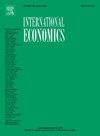COVID-19 大流行对澳大利亚股市的非对称冲击:多阈值非线性 ARDL (MTNARDL) 方法的证据
引用次数: 0
摘要
本研究采用新颖的方法(多阈值非线性 ARDL)研究了 COVID-19 大流行病对澳大利亚股市的非对称影响。我们发现,在短期内,大流行病的影响对于中等程度的大流行病强度(30%-70% 范围)在统计上并不显著。然而,对于更严重的爆发(高于 70%)和强度较低的初始阶段(低于 30%),大流行都会产生短期负面影响。有趣的是,从长期来看,这些负面影响在所有强度水平上都是一致的。此外,我们的分析还揭示了在不同的大流行强度阈值下,日常经济活动与股市表现之间的反直觉关系。本文章由计算机程序翻译,如有差异,请以英文原文为准。
Asymmetric shocks of the COVID-19 pandemic on the Australian stock market: Evidence from multiple threshold nonlinear ARDL (MTNARDL) approach
This study investigates the asymmetric effects of the COVID-19 pandemic on the Australian stock market using a novel methodology (multiple threshold nonlinear ARDL). We find that, in the short-term, the pandemic's impact is statistically insignificant for moderate levels of pandemic intensity (30–70% range). However, for both more severe outbreaks (above 70%) and less intense initial stages (below 30%), the pandemic shows short-term negative effects. Interestingly, these adverse effects become consistent across all intensity levels in the long-term. Additionally, our analysis reveals counterintuitive relationships between daily economic activity and stock market performance at different pandemic intensity thresholds.
求助全文
通过发布文献求助,成功后即可免费获取论文全文。
去求助
来源期刊

International Economics
Economics, Econometrics and Finance-Economics, Econometrics and Finance (all)
CiteScore
6.30
自引率
0.00%
发文量
74
审稿时长
71 days
 求助内容:
求助内容: 应助结果提醒方式:
应助结果提醒方式:


